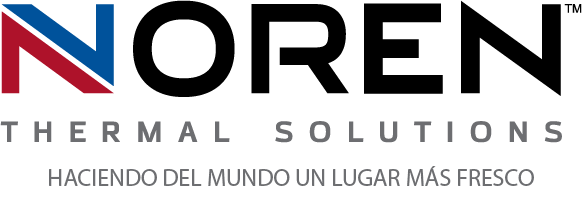 Though the concept of ambient cooling may be one of the simplest thermal management concepts on the surface, modern heat exchanger technology has made it one of the most beneficial. In many applications, the maximum operating temperature is well below the ambient temperature outside of their electrical enclosures. This makes the use of more technically complex solutions, such as air conditioners, less necessary for companies to maintain optimal electrical cooling for their technologies. With heat exchangers designed specifically to make the most of ambient cooling methods, even more companies can switch to more efficient electrical cooling solutions.
Though the concept of ambient cooling may be one of the simplest thermal management concepts on the surface, modern heat exchanger technology has made it one of the most beneficial. In many applications, the maximum operating temperature is well below the ambient temperature outside of their electrical enclosures. This makes the use of more technically complex solutions, such as air conditioners, less necessary for companies to maintain optimal electrical cooling for their technologies. With heat exchangers designed specifically to make the most of ambient cooling methods, even more companies can switch to more efficient electrical cooling solutions.
Ambient cooling and the transfer of heat
By definition, ambient cooling is a more natural process than the electrical cooling solutions that companies had to choose from in the past. The accepted practice was to utilize HVAC and other methods to create chilled air and circulate it through electrical enclosures, thus preventing electrical waste heat from building up into heat pockets. However, keeping the temperature inside of the enclosure at just above the ambient temperature outside of it doesn’t require the use of chilled air. On the contrary, it can be achieved by consistently removing the waste from inside of the enclosure as soon as it’s created.
Applying ambient cooling to electrical enclosures
The principles of transferring waste heat quickly and efficiently are what made heat exchangers a more efficient alternative to traditional cooling solutions, and they form the basis of how many modern heat exchangers still operate. While the process may seem simpler, the methods of transferring waste heat are far more advanced than traditional electrical cooling solutions, and in many different ways. For example, most modern applications are designed to operate at maximum temperatures that far exceed the temperatures around them. With simpler ways to create sufficient ambient cooling, heat exchangers can be designed to efficiently cool some of the most powerful and advanced technological applications.
Advanced ambient cooling with modern heat exchangers
Because of the intricate nature of electrical thermal management and its relation to most companies’ overall operations, it’s natural for companies to seek even more advanced methods of ambient cooling as they invest in more advanced technologies. Fortunately, heat exchangers can utilize a variety of different, natural methods of transferring heat to meet the unique cooling parameters of complex applications. For instance, methods such as natural/forced convection and conduction can often be combined with phase-change cooling methods, which utilize a cooling fluid’s latent heat of vaporization to make transferring heat a more efficient and rapid process.
For more information about how heat exchangers make the most of ambient cooling methods, call Noren Thermal Solutions in Taylor, TX, at 866-936-6736.







